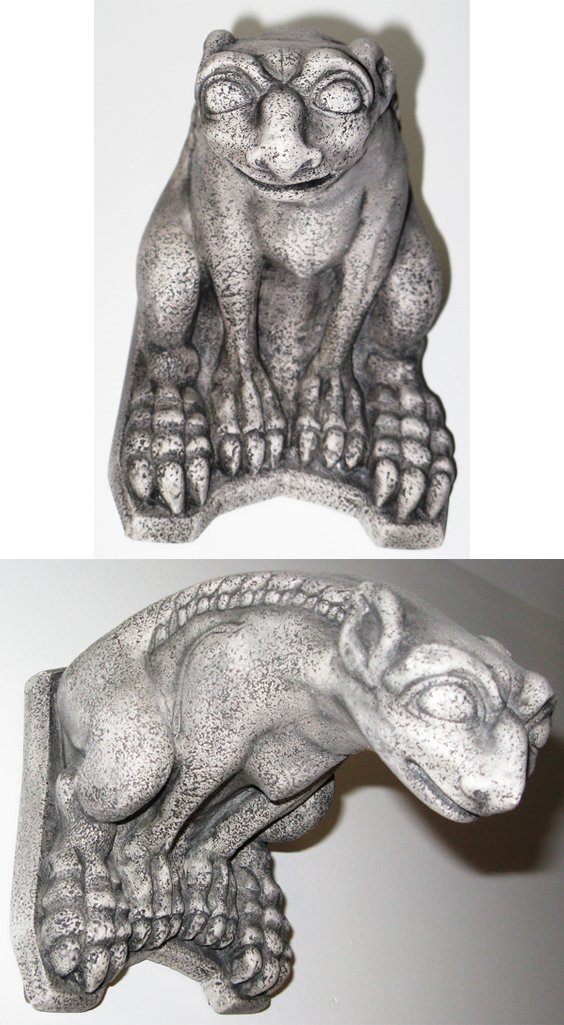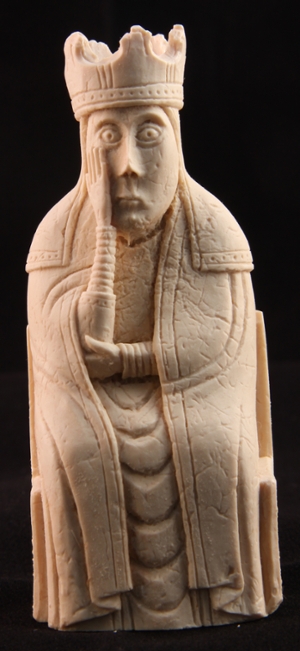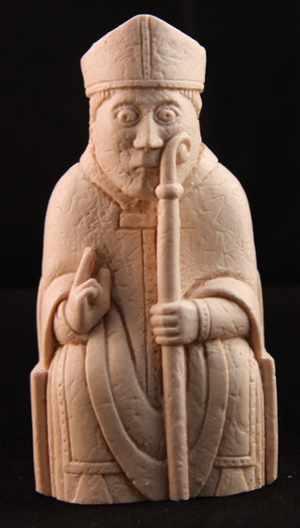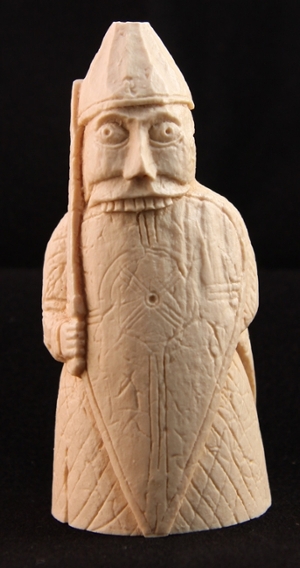The medieval period, often called the Middle Ages, spans approximately one thousand years, from the fifth to the fifteenth century AD. The fall of the Western Roman Empire in 476 AD marks its inception, while the fall of Constantinople (and the Byzantine Empire) to the Ottomans in 1453 AD marks its end. The cultures of Western Europe during this period were feudal--that is, strictly hierarchal--in nature. Each region was ruled by a monarch and, over the course of the centuries, grew more distinct from its neighbors, eventually becoming a defined nation. The Western medieval world was one of shifting alliances and open hostilities, but it was nominally unified by (and, in theory, governed by) the Christian Church.
Medieval art, while drawing upon the Greco-Roman tradition, differed considerably. The varying styles of the cultures comprising medieval Western Europe are the results of the stylistic transition which occurred in the Late Antique period. Medieval art also took certain distinctive traits from the local culture--be it English, French, Italian, etc.--most of which had Germanic origins or connections. However, the common thread of all Western medieval art was religious faith. Medieval art focused upon internal and spiritual, rather than external or physical, perfection. Artists used the visual medium as a means of religious guidance and a product of devotion. They portrayed their subjects symbolically rather than realistically, forgoing the naturalistic idealism of the Greeks for spiritualistic idealism.
Sculpture

Charlemagne
Medieval French
replica: from the Louvre, Paris
date of the original: c. 10th to 11th centuries AD
provenance of the original: from the Metz Cathedral Treasure; now in the Louvre, Paris
description: Small equestrian statuette: rider with orb in right hand. Plaster replica with black and gold bronze-like finish; bronze original. On base: height 28 cm, width 18 cm, depth 10 cm.
The Emperor of the West, Charles the Great, or “Charlemagne,” was consecrated as Holy Roman Emperor on Christmas Eve in AD 800. Therewith he meant to resuscitate what remained of the Roman Empire in the West. The way Charlemagne is represented on this tenth or eleventh AD century equestrian statuette was directly inspired by and actually copied from the equestrian statue of the Emperor Marcus Aurelius which is still standing in Rome. In addition to the imperial orb, this statuette of Charlemagne also held a sword. His garment is, however, medieval.

Notre Dame Panels
replicas: from the Louvre, Paris
Peasant Carrying a Bundle of Hay (top)
Height 78 cm, width 40 cm, depth 12.75 cm.
The original of this panel (and of the Mower panel, below) is situated on the Door of the Virgin on the west front of the Cathedral of Notre Dame in Paris. The jambs of the Door are composed of panels which represent the signs of the Zodiac and the Labours of the months of the year.
Although the Cathedral was begun in 1163, the portal of the Virgin was begun and finished between the years 1210 and 1220. The many bas reliefs on this door, like the two in the Museum, depict the natural universe as it was conceived at the time. Branches, leaves, flowers and fruits as well as the seasons and ages of man represent medieval life, all of which revolves around the central figure of the Virgin Mary.
The sculpture on the door exemplifies the flowering of Gothic art on the cathedral. It is no longer simply ornament, but enhances the appearance of the building.
This panel represents the month of June. The peasant wears a short tunic and carries a hay bale over his shoulder. The figure of the peasant is incised with great depth to give it simplicity and clarity; it has lost the rigidity characteristic of the preceding Romanesque period and has re-adopted some of the natural quality of the Classical.
Mower Sharpening his Scythe (bottom)
Height 77 cm, width 40 cm, depth 11.5 cm.
The left jamb of the Door of the Virgin finishes at the top with the month of June. The right-hand jamb begins at the top with this representation of the Labour of the month of July.
The order of the months, the first six rising on the left jamb, the next six descending on the right, reflects the movement of the sun, rising in the heavens for the first six months, descending for the last six.
This peasant wears a mid-length tunic and, holding a scythe in his left hand, sharpens it with a stone in his right.
(See also: Gargoyle.)

Gargoyle
Medieval French
replica: from Facsimiles Ltd., Nashua, NH
gift of: Dale and Cathy Gunderson
date of the original: c. 13th century AD
provenance of the original: in situ on the west facade of Notre Dame Cathedral, Paris
description:Sitting gargoyle. Large nose, protruding eyes and large
eyebrows. Ears to side with scales running down either side of body. Large clawed feet. Resin replica; grey cathedral stone original. Height 15 cm, width 13.25 cm, depth 21 cm.
Perched on the balustrades, staring over the city, crouching, grimacing, ready to spring and pounce, are hundreds of grotesques--the gargoyles of Notre Dame. According to legend, the gargoyles had been chased from the interior of the Cathedral by the Virgin Mary, who kept them as guardians. Unfortunately, most of the gargoyles now on the Cathedral are the restorations of Eugene Viollet-le-Duc (1814-1879, a prominent French architect who specialized in the restoration of Gothic buildings), the originals having gradually weathered away. Our replica is, however, a copy of one of the few remaining originals on the Cathedral.
Gargoyles are not found on architecture until the Gothic period. Originally, they were spouts which allowed water to escape from the roof gutters and clear the walls. They were named from the French gargouiller (to gurgle) which approximated the sound made by the water gushing through these spouts. In the 14th and 15th centuries AD, gargoyles were also used purely as decoration, and in the 16th century, with the introduction of lead drain-pipes, they became functionally obsolete.
(See also: Notre Dame Panels.)
Oil Lamps & Pottery

Abbasid Oil Lamp
Medieval Islamic
original
bequest of: W.A.S. Sarjeant
date of the original: 8th century AD and later
provenance of the original: purchased by donor in Carthage
description: Medieval Islamic. This lamp originated in the Eastern Mediterranean. It is made of baked clay with slip and has a bird and vine decoration on its shoulder. Length 9.25 cm.

Pilgrim Flask (Ampulla)
Early Medieval
replica: hand-crafted from an original at ancientlamps.com
date of the original: 4th-7th century AD
provenance of the original: the Shrine of St. Menas, near Alexandria, Egypt
Lewis Chessmen

King
replica: from the British Museum, London
donated by: Professor Sharon Wright and Lyla Wright
date of the original: 1150-1200 CE
provenance of the original: Uig, an area on the western coast of the Isle of Lewis in the Outer Hebrides, Scotland buried in a sandbank.
description: The Kings are all seated on highly intricate thrones, each holding a sword with both hands and resting it across his knees suggesting both the King's physical strength and unwavering justice. Drawing on the regal fashion of the time their hair is arranged in thick braids across their backs.

Queen
replica: from the British Museum, London
donated by: Professor Sharon Wright and Lyla Wright
date of the original: 1150-1200 CE
provenance of the original: Uig, an area on the western coast of the Isle of Lewis in the Outer Hebrides, Scotland buried in a sandbank.
description: The Queens of the Lewis Chessmen collection are characterized by their long cloaks, crowns, and the sorrowful look on their face. They sit upon thrones with their head in their left hand as they supposedly watch over a battle, mourning over the destruction.

Bishop
replica: from the British Museum, London
donated by: Professor Sharon Wright and Lyla Wright
date of the original: 1150-1200 CE
provenance of the original: Uig, an area on the western coast of the Isle of Lewis in the Outer Hebrides, Scotland buried in a sandbank.
description: There are 16 Bishops from the Lewis chess piece hoard. The two we have here are shown wearing mitres, a ceremonial headdress of bishops, and they hold a hooked staff of office known as a crozier. While only one is enthroned they are both making a sign of blessing, are clean-shaven and wearing religious garments.

Knight
replica: from the British Museum, London
donated by: Professor Sharon Wright and Lyla Wright
date of the original: 1150-1200 CE
provenance of the original: Uig, an area on the western coast of the Isle of Lewis in the Outer Hebrides, Scotland buried in a sandbank.
description: The Knights of the Lewis Chessmen collection are characterized as armoured men sitting astride miniature horses while bearing weapons. They display the armour and weapons used in the second half of the twelfth century in Norway.

Berserker
replica: from the British Museum, London
donated by: Professor Sharon Wright and Lyla Wright
date of the original: 1150-1200 CE
provenance of the original: Uig, an area on the western coast of the Isle of Lewis in the Outer Hebrides, Scotland buried in a sandbank.
description: The berserkers are one of the two types of rooks in the Lewis Chessmen collection. These pieces are often considered comic relief as they are characterized by their bulging eyes and biting of their shields. Berserkers, in Norse legend, were fighters who inspired great fear into their opponents because they were vicious and uncontrollable in battle.

Warder
replica: from the British Museum, London
donated by: Professor Sharon Wright and Lyla Wright
date of the original: 1150-1200 CE
provenance of the original: Uig, an area on the western coast of the Isle of Lewis in the Outer Hebrides, Scotland buried in a sandbank.
description: The Warders are the second type of rook next to the berserkers. They are shown wearing helmets and defending themselves with shields decorated comparably to those of the Knights. They are represented as foot soldiers with a sword and shield in hand.
The "Norwegian argument," the belief that the Chessmen were crafted in Trondheim, Norway, is the most widely accepted theory pertaining to the origins of the Chessmen as it is supported by the most evidence. However, some scholars have recently found evidence that suggest the possibility of the Lewis Chessmen pieces having Icelandic roots.